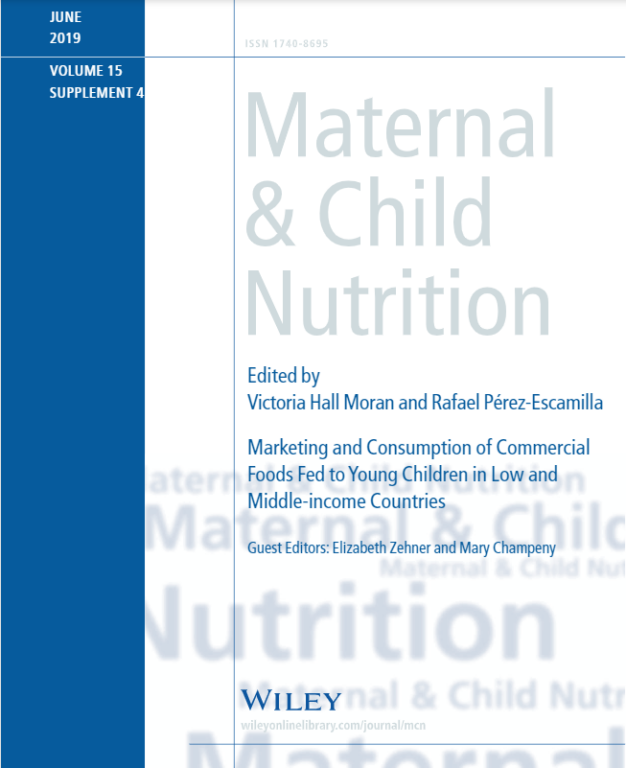This article was published in the Maternal & Child Nutrition Supplement: Marketing and Consumption of Commercial Foods Fed to Young Children in Low and Middle‐income Countries.
Access abstract in Bahasa Indonesia and French.
Abstract: Commercially produced complementary foods (CPCF) that are iron fortified can help improve iron status of young children. We conducted a review of 217 CPCF sold in 42 stores in Bandung, Indonesia, in 2017. There were 95 (44%) infant cereals, 71 (33%) snacks or finger foods (biscuits or cookies, puffs, and noodles or crackers), 35 (16%) purees, and 16 (7%) other foods for which we obtained label information. Nearly 70% of CPCF reported iron content on their labels, but only 58% of products were reported to be fortified with iron according to ingredient lists. Among iron‐fortified products, only one fifth indicated a specific type of iron used as the fortificant, but all of these were recommended by the World Health Organization for fortifying complementary foods. Infant cereal was more likely to contain added iron (81%) compared with snacks or finger food (58%) and purees (14%) and had higher iron content per median serving size (cereal = 3.8 mg, snacks or finger food = 1.3 mg, mixed meals = 2.7 mg, and purees = 0.9 mg). Infant cereal was most likely to meet the recommended daily intakes for iron (41% for infants 6–12 months of age and 66% for children 12–36 months) compared with snacks or finger food (infants = 14%, children = 22%), mixed meals (infants = 28%, children = 46%), or purees (infants = 9%, children = 15%). Regulations on fortification of complementary foods need to specify minimum levels and forms of iron and require reporting in relation to requirements by child age and serving size. Monitoring and enforcement of regulations will be essential to ensure compliance.
Authors: Michele L. Dreyfuss, Mackenzie Green, Agustino, Dian N. Hadihardjono, Doddy Izwardy & Sandra L. Huffman
View Resource

